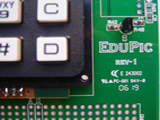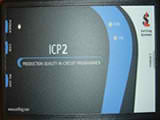Creating MPLAB IDE new project
In order to create code that is executable by the target PICmicro MCU, source files need to be put into a project. The code can then be built into executable code using selected language tools (assemblers, compilers, linkers, etc.). In MPLAB IDE, the project manager controls this process.
All projects will have these basic steps:
- •Select Device
- The capabilities of MPLAB IDE vary according to which device is selected. Device selection should be completed before starting a project.
- •Create Project
- MPLAB Project Wizard will be used to Create a Project.
- •Select Language Tools
- In the Project Wizard the language tools will be selected. For this tutorial, the built-in assembler and linker will be used. For other projects one of the Microchip compilers or other third party tools might be selected.
- •Put Files in Project
- Two files will be put into the project, a template file and a linker script. Both of these exist in sub-folders within the MPLAB IDE folder. Using these two files it is easy to get started.
- • Create Code
- Some code will be added to the template file to send an incrementing value out an I/O port.
- • Build Project
- The project will be built – causing the source files to be assembled and linked into machine code that can run on the selected PICmicro MCU.
- • Test Code with Simulator
- Finally, the code will be tested with the simulator.
The Project Wizard will easily guide us through most of these steps.
source : www.microchip.com
Download MPLAB IDE and use the tutorial in the MPLAB IDE User’s Guide to explore how easy it is to create a project.
You can watch a quick video-tutorial on how to create, build and assemble your project in the following video







